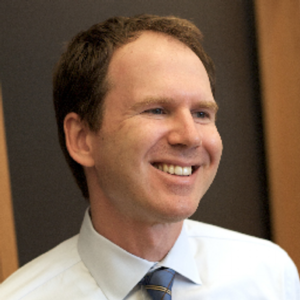
Benjamin Sachs is the Kestnbaum Professor of Labor and Industry at Harvard Law School and a leading expert in the field of labor law and labor relations. He is also faculty director of the Center for Labor and a Just Economy. Professor Sachs teaches courses in labor law, employment law, and law and social change, and his writing focuses on union organizing and unions in American politics. Prior to joining the Harvard faculty in 2008, Professor Sachs was the Joseph Goldstein Fellow at Yale Law School. From 2002-2006, he served as Assistant General Counsel of the Service Employees International Union (SEIU) in Washington, D.C. Professor Sachs graduated from Yale Law School in 1998, and served as a judicial law clerk to the Honorable Stephen Reinhardt of the United States Court of Appeals for the Ninth Circuit. His writing has appeared in the Harvard Law Review, the Yale Law Journal, the Columbia Law Review, the New York Times and elsewhere. Professor Sachs received the Yale Law School teaching award in 2007 and in 2013 received the Sacks-Freund Award for Teaching Excellence at Harvard Law School. He can be reached at [email protected].
Football players at Northwestern University want a union, and they have now filed a petition with the NLRB requesting a union election. The petition is the latest round in a long-running struggle between college athletes – who are paid essentially only with tuition – and the colleges they play for – which earn many, many millions of dollars in revenues from their athletic programs.
To get a bit of perspective on the background here, consider the following: a few years ago, the NCAA got $10.8 billion (yes billion) dollars for fourteen years’ of broadcast rights to the “March Madness” college basketball tournament. Nick Saban, the highest paid NCAA football coach, made $5,545,852 in 2013, and the 50th highest paid college football coach earned more than $2 million that year. For their contribution to all this revenue, players get tuition plus (sometimes) a stipend of about $2000. In 2009, the NCAA estimated that a full scholarship was worth $15,000 at a state school and a bit more than $35,000 at a private institution. Given the number of hours players put in at major athletic programs, this might not even come out to minimum wage.
From a legal perspective, the issue presented by the players’ unionization efforts is a pretty straightforward one. The question is whether, under either the NLRA or state labor law, the players are “employees.” If they’re employees, then they will be entitled to unionize and bargain collectively over the terms and conditions of their employment.
So, are college athletes employees?
To answer that, we have to first know whether we are talking about players at a private institution (like Northwestern) or at a public university (like Saban’s Alabama and many of the other biggest athletic programs in the country). For the Northwestern players, the question turns on federal labor law as interpreted by the National Labor Relations Board. Although the Board has flip-flopped on the question of student employees in recent years, the answer to the college-athlete question would seem to be surprisingly clear. That’s because even under the most hostile Board case on the subject of student-employees (the Brown University decision), I think the football players still win.
Brown holds that the relevant inquiry – for determining employee status – is whether the individuals in question are “primarily students and have a primarily educational . . . relationship with their university.” If you’re “primarily” a student, and your relationship to the university is “primarily educational,” then you’re not an employee and you’re not entitled to unionize. On the other hand, if your relationship with the university is primarily “economic,” then you’re covered by the law.
The Board will have to hear evidence on this question, but a passing familiarity with big-time college athletics suggests that players on these teams are not “primarily students,” and that their relationship to their universities is not “primarily educational.” It might be partly educational, but its not primarily so. If that’s the case, then the Board will hold – even under Brown – that the players are employees.
Given this state of the law, the NCAA has a choice. It can exploit the numerous procedural mechanisms it will have at its disposal to delay the date when the players can form a union. The alternative – the more productive one in my view – is to start the process of dialogue with the players and their representatives, thereby giving the players a seat at the table that they help set. Whether this dialogue takes the form of traditional collective bargaining or something more experimental should be the first topic for discussion.






Daily News & Commentary
Start your day with our roundup of the latest labor developments. See all
April 23
Supreme Court hears cases about 10(j) injunctions and forced arbitration; workers increasingly strike before earning first union contract
April 22
DOL and EEOC beat the buzzer; Striking journalists get big NLRB news
April 21
Historic unionization at Volkswagen's Chattanooga plant; DOL cracks down on child labor; NY passes tax credit for journalists' salaries.
April 19
Alabama and Louisiana advance anti-worker legislation; Mercedes workers in Alabama set election date; VW Chattanooga election concludes today.
April 18
Disneyland performers file petition for unionization and union elections begin at Volkswagen plant in Tennessee.
April 18
In today’s Tech@Work, a regulation-of-algorithms-in-hiring blitz: Mass. AG issues advisory clarifying how state laws apply to AI decisionmaking tools; and British union TUC launches campaign for new law to regulate the use of AI at work.